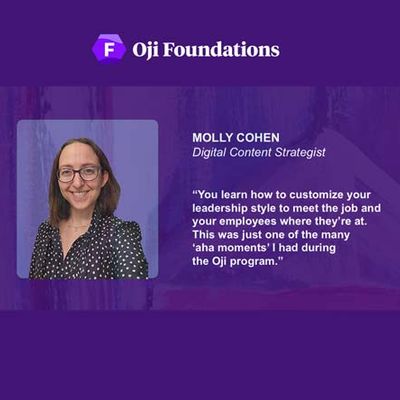Effective Decision-Making Starts with Regulating Your Emotions

Did you know there’s a 95% correlation between companies that excel at decision making and those with top-tier financial performance? That finding from Bain & Company research isn’t surprising, whether you consider the impact of an executive’s decision to acquire a competitor or the thousands of smaller decisions that teams make every day. Yet a McKinsey survey reports that only 20 percent of respondents believe their organization’s decision making is superior.
No doubt, effective decision making is critical to an organization’s success. But decision making skills involve more than just listing pros and cons and doing the math. And although many executives will say they never let feelings affect their judgment, emotions often play a key role in decisions, for better or for worse. Emotionally intelligent leaders distinguish themselves by employing skills to regulate their emotions and make better, more objective decisions.
How do emotions affect decisions?
Emotions provide information that can be of great value to decision makers. They can help us make better informed decisions – or they can unconsciously cloud our thinking and degrade our ability to make wise choices. The good news is that, for those who acquire the necessary skills, emotional intelligence supports the search for the optimal choice. Whether you’re a team leader or a CEO, if you can recognize how your emotions are affecting your perspective on a decision, you can take action to shift your emotions and adopt a more objective viewpoint. When you need to make a decision, you can use emotional intelligence to:
- Recognize and name your emotional state
- Determine whether your emotional state is conducive to the decision you’re making
- Regulate your emotional state to enable better decision making
Let’s look at two examples of how emotions can profoundly affect different types of managerial decision making.
Case 1: When sunk costs distort decision making
When you’ve put time, effort, and money into pursuing a choice you’ve made, it’s often hard to change course even as evidence of failure mounts. This is the sunk-cost fallacy. You become emotionally attached to a particular option that you’ve invested in, prejudicing you against other options.
The sunk-cost fallacy can be devastating to an organization’s decision making. We’ve probably all succumbed to this common cognitive bias at one time or another; it’s a behavior based in part on fear of acknowledging a mistake and being judged for it.
Take for instance an entrepreneur who set out to choose a name for his company. After doing his own research and brainstorming, he found a name he liked and put substantial effort and cash into testing that name with focus groups, buying URLs, and so on. But when he hired an agency to work on branding, the agency brought forward objective reasons why the name was a poor choice.
The entrepreneur’s initial reaction was that he didn’t want to waste what he’d already invested in the name – the sunk costs. But using his emotional awareness to recognize his frustration with the agency’s objective feedback, he was able to change course and choose a better name – making the right decision for his business.
Case 2: When mood clouds judgment
Your moods aren’t only about whether you feel up or down, agitated or mellow. They also affect how you perceive everything in your world, whether you’re aware of it or not.
In a study conducted by Oji co-founder Marc Brackett and his colleagues at the Yale Center for Emotional Intelligence, one group of middle school teachers was asked to write about a good day while another group wrote about a bad day. Next, teachers in both groups were asked to grade an essay. On average, the bad-day teachers marked the identical essay a whole letter grade lower than the good-day teachers – even though 87% of the teachers said they didn’t believe their mood affected their grading.
So when it comes to our own emotions, there’s a yawning awareness gap. Interestingly, other researchers have found that if study participants are prompted with the question “How are you feeling now?” before they make a judgment or decision, emotions don’t measurably affect performance. Mere awareness of their emotions enabled the participants to improve their decision making. Marc Brackett validated this in his own follow up study with middle school teachers; he kept the experiment the same, but asked the teachers to write down how they felt before they began grading the papers. The result: the grading delta between the two groups of teachers went away entirely.
That’s called putting emotional intelligence to work. And it’s as important in business as it is in education, whether you’re assessing competing job candidates or making a go/no-go decision on product development. So how can you leverage emotional intelligence to make better decisions, let’s explore…
How to leverage emotional intelligence to make better decisions
There are two fundamental steps to effective decision making. First, ready yourself emotionally to make the decision. Second, use a proven decision making process to ensure that you evaluate all key factors. As you might imagine, implementing these steps takes practice and coaching, but here’s a brief outline to get you started on the path to better decisions.
Step 1: Make yourself ready emotionally:
Recall the study I referenced early, in which participants were asked how they were feeling before making a decision. In the cases in which participants were asked the question before making a decision, emotions didn’t affect their performance. When you’re in the position of making a critical decision, first stop and ask yourself the following questions:
- What emotions am I experiencing right now?
- Do I know why I feel this way?
- How useful is this emotion to the decision I’m making?
- Do my current emotions put me in the best place to make the decision?
- If not, what emotion would be better for the decision I’m about to make, and how can I shift to that emotion?
Step 2: Take action:
Emotional awareness is the first step. But decision makers also need to create a structured process to make optimal choices. For instance, when the entrepreneur brought in a branding agency, they added objectivity and new thinking to the process of choosing a company name. Here are a few things to consider before taking action on a decision:
- Define. Be clear about what your decision objectives are, separate from the obvious options you’ve outlined.
- Imagine. Think creatively about what new options you can consider and how you’ll evaluate them.
- Decide. Consider how each of the options you’ve identified will address your core objectives.
Effective decision making is a must-have for any successful organization. Leaders and managers who bring emotional intelligence to the decision process are better equipped to achieve optimal business outcomes. Armed with a proven process and a bit of practice, you can learn to make decisions like a pro.
Want to explore how you can bring emotional intelligence to every business decision? Check out Oji Decide.
Latest Posts
BACK TO HOME ❯Sign up for our People-Powered Newsletter.

 Meet our Program Experts
Meet our Program Experts
 Why Oji is Different
Why Oji is Different
 First Impressions of the Oji Foundations Program
First Impressions of the Oji Foundations Program